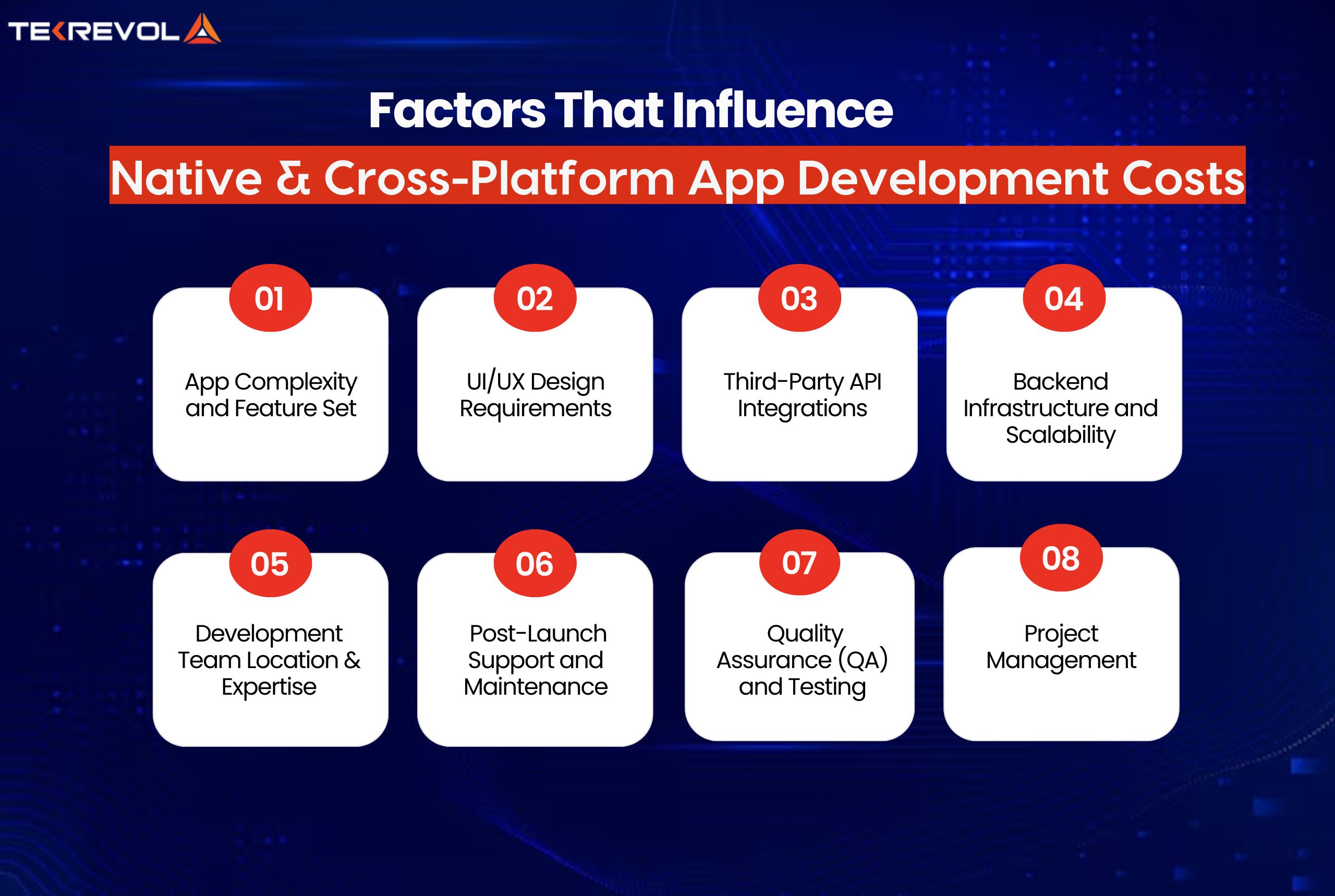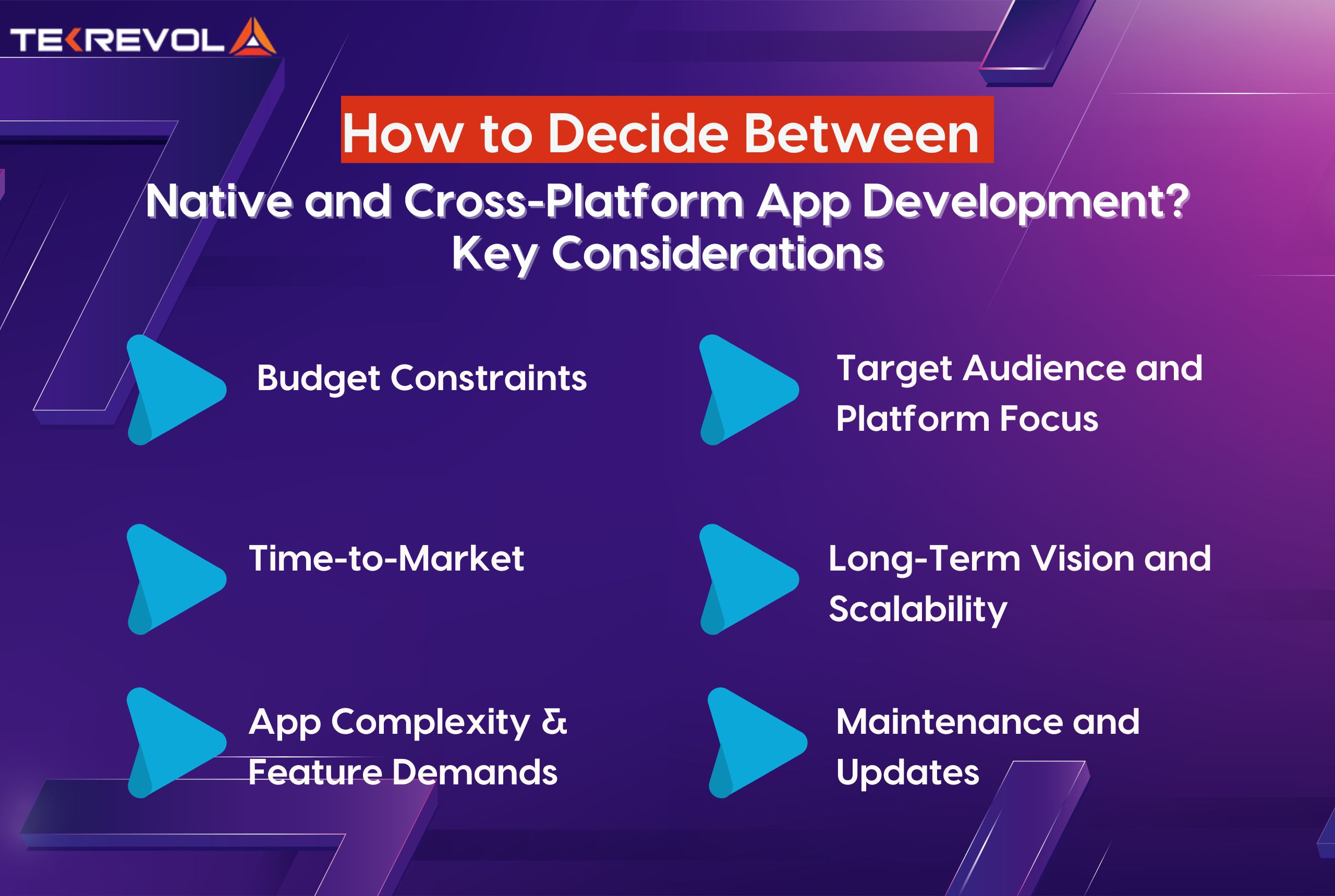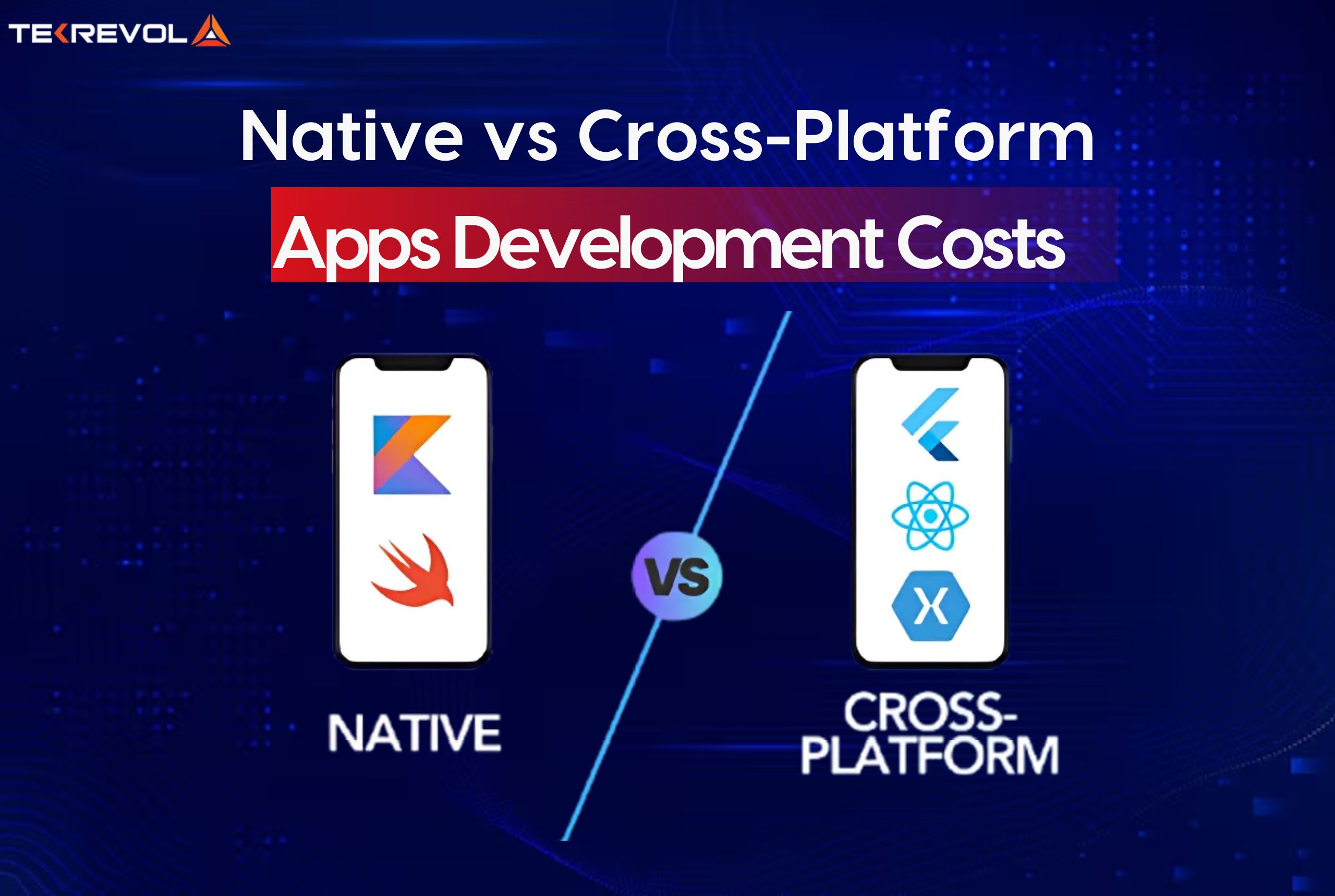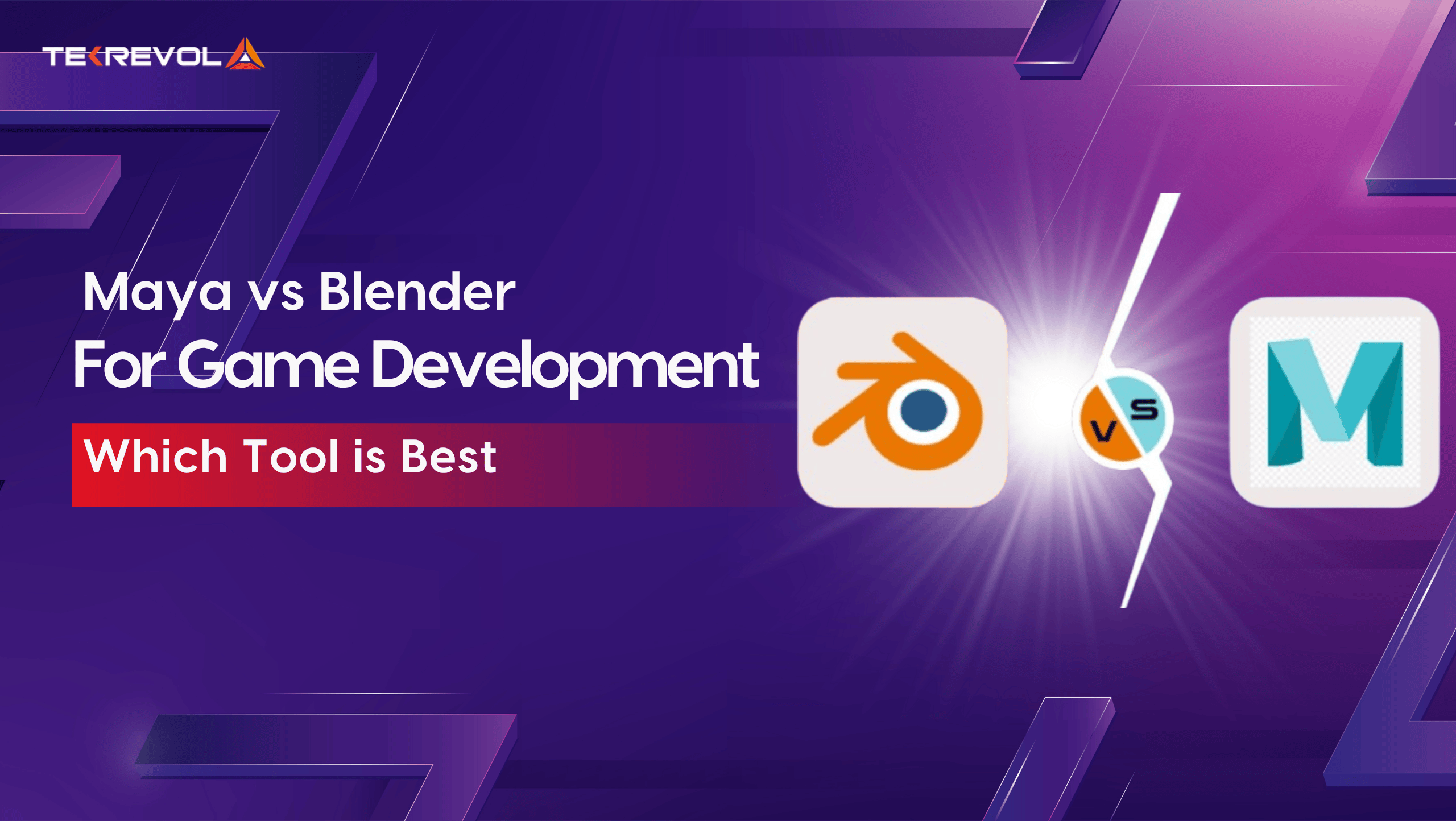When planning a mobile app, one key decision is whether to build a native platform app or go with a cross-platform approach. And choice heavily relies on the cost of each approach.
The native vs cross-platform cost can vary significantly depending on complexity, features, and target devices. Considering these differences early helps you plan budgets and timelines efficiently.
Native apps, developed specifically for iOS or Android, often provide better performance and access to device-specific features. On the other hand, cross-platform apps, using frameworks like React Native, allow you to launch on multiple platforms simultaneously, reducing development time but sometimes increasing long-term maintenance needs.
By weighing cross-platform vs native development cost, you can choose the solution that balances budget, performance, and user experience. Proper planning ensures that your app delivers value without exceeding financial limits.
Average App Development in 2025: Native vs Cross-Platform Cost
Understanding the native vs cross-platform cost is critical when budgeting for your mobile app. On average, developing a native platform app for iOS or Android can range from $50,000 to $150,000, depending on features, design complexity, and integrations.
In comparison, cross-platform app development typically costs 20–30% less upfront. While React Native app development costs are lower initially, long-term maintenance, debugging, and performance optimization may add to the total.
| App Complexity | Cross-Platform App Development | Native App development |
| Simple Apps | $40,000 – $50,000 | $25,000 – $50,000 |
| Medium Apps | $55,000 – $160,000 | $50,000 – $120,000 |
| Complex Apps | $80,000 – $250,000+ | $120,000 – $300,000+ |
By comparing cross-platform vs native development costs, businesses can decide whether to prioritize performance, speed-to-market, or cost efficiency. Knowing the differences between native and cross-platform development helps in making strategic decisions about timelines and resource allocation.
Note: These prices listed above are estimates. For an accurate estimate for your project, it is advisable to team up with a reliable mobile app development company that will go over your requirements and offer an effective approach to building your app.
Native vs Cross-Platform Apps: A General Overview
When planning to build a mobile app, awareness of native vs cross-platform cost is crucial. The core differences help in evaluating performance, maintenance, and long-term investment.
What Are Native Apps?
Native apps are developed specifically for iOS or Android using the platform’s original programming languages. That is:
- Swift or Objective-C for iOS
- Kotlin or Java for Android
Since these apps are developed for a particular platform, they get access to the device’s entire capabilities, providing excellent performance, quick load times, and silky smooth animations.
Best for:
- Apps requiring the best performance (e.g., mobile games, AR/VR, real-time applications)
- Advanced apps with rich integration with device hardware
- Companies with a large budget and long-term product planning
What Are Cross-Platform Apps?
Cross-platform applications use a single codebase across iOS and Android, often via Flutter, React Native, and Xamarin. While the React Native app development cost is lower than native, it saves both development and maintenance time.
Best for:
- Small startups and SMEs with constrained budgets
- Applications that require instant access to users across both platforms
- MVPs and proof-of-concept applications
This comparison clarifies the difference between native and cross-platform development costs, helping teams make informed decisions.
App Development: Native vs. Cross-Platform Cost Breakdown
Understanding native vs cross-platform cost is essential when planning your app development budget. The choice affects not only initial development expenses but also long-term maintenance and updates.
Native Platform Costs
Developing a native platform app requires separate codebases for iOS and Android. This can increase React Native app development cost if you later attempt hybrid solutions. Native apps excel in performance, hardware integration, and user experience, justifying the higher investment for complex applications.
Cross-Platform App Costs
A cross-platform native app development approach uses a single codebase for multiple platforms. This reduces both time and cost while maintaining reasonable performance.
Frameworks like Flutter and React Native make it easier to manage updates and scalability, lowering overall cross-platform vs native development cost.
Let me break it down for you to decide which path is the most cost-effective for your app.
| Cost Component | Native App (iOS + Android) | Cross-Platform App |
| Design & UI/UX | $10,000 – $30,000 | $8,000 – $20,000 |
| Development | $100,000 – $250,000 | $60,000 – $150,000 |
| Testing & QA | $10,000 – $25,000 | $8,000 – $15,000 |
| Maintenance (Yearly) | $20,000+ | $10,000+ |
| Total Estimate | $140,000 – $300,000+ | $80,000 – $180,000+ |
By understanding native vs cross-platform costs, businesses can make informed decisions that balance performance, timeline, and budget efficiently.
App Development Costs: What Goes Beyond the Initial Build?
While cross-platform vs native development cost often favors cross-platform apps upfront, it’s important to account for hidden expenses that affect your total budget for both approaches
Hidden Expenses in Native App Development:
- Full Device & OS Testing: Testing across multiple devices and operating systems for iOS and Android increases QA effort and adds to native vs cross-platform cost.
- Ongoing Platform Updates: All OS platforms are updated from time to time, making sure their systems remain up-to-date and work with various apps.
- Multiple Codebases to Support: Expanding the number of codebases results in more work to keep all updates, fixes, and security in order.
- App Store Compliance & Submission Fees Native applications need to adhere to strict App Store and Google Play guidelines, sometimes incurring extra development effort and submission fees.
- Performance Tuning: Native apps are also subject to constant performance tuning to keep up with changing user requirements and available hardware.
Hidden Costs in Cross-Platform Development:
- Bridging Native Features: Integrating advanced device capabilities may need custom plugins, adding to the React Native cost.
- UI/UX Customization: Getting the app to feel indistinguishably native on each platform, constantly matching animations, gestures, and design guidelines, can take additional tweaking.
- Third-Party Library Limitations: Certain libraries or SDKs can be poorly designed or unsupported in cross-platform frameworks, requiring further workarounds.
- Performance Bottlenecks: Modern frameworks are fast, but high-performance applications may need platform-specific code to optimize speed.
- Debugging Complexity: Cross-platform applications can present special debugging complexities, as problems can result from interactions between the shared code and native elements.
By factoring these hidden elements, you get a realistic view of native vs cross-platform cost for long-term planning.
Factors That Influence The Native and Cross-Platform Costs

Choosing between native and cross-platform development is just the start. Several factors significantly impact your native vs cross-platform cost, helping you plan better and avoid surprises.
1. App Complexity and Feature Set
Feature complexity is the biggest cost driver. The more advanced your app, the higher the cross-platform vs native development cost.
Examples of expensive features:
- Artificial Intelligence & Machine Learning integration
- Augmented/Virtual Reality features
- Real-time messaging or video calling
- In-app payment systems and digital wallets
- GPS and location services
- Custom animations and motion graphics
- Complex backend with role-based user management
Average cost of a feature-packed app: $80,000 – $250,000+
2. UI/UX Design Requirements
Design is absolutely the most important aspect when it comes to user interaction and retention. The UI/UX design’s level of complexity and sophistication can significantly impact your user retention and native vs cross-platform cost budget.
| Design level | Features | Estimated cost |
| Basic UI | Simple layouts, standard components | $5,000 – $15,000 |
| Mid-Level UI | Custom graphics, interactive elements, smooth transitions | $20,000 – $50,000 |
| High-End UI | Gesture controls, AR features, real-time customization, pixel-perfect | $75,000+ |
3. Third-Party API Integrations
Apps are not often standalone. Integration with third-party services brings both value and expense.
Some common APIs are:
- Social media sign-ins (Google, Facebook, Apple)
- Payment gateways (Stripe, PayPal)
- Analytics platforms (Google Analytics, Mixpanel)
- Communication APIs (Twilio, Firebase)
- Maps and geolocation (Google Maps, Mapbox)
Each integration will take days or weeks, based on complexity and platform demands.
4. Backend Infrastructure and Scalability
A solid backend app development is essential to handle logic, store data, perform user authentication, and scale, which directly influences native vs cross-platform cost.
Drivers of backend expense:
- Custom-developed vs. BaaS (Backend-as-a-Service)
- Requirements for real-time data processing
- Security measures and compliance (HIPAA, GDPR)
- Cloud hosting providers (AWS, Azure, Google Cloud)
Backend development can contribute 20-40% of the overall project expense.
5. Development Team Location & Expertise
Developer rates vary greatly by geography and skill level. Your react native app development cost can fluctuate drastically depending on where your development team is located.
| Region | Hourly Rate (Average) |
| North America / Western Europe | $47 – 150+ |
| Eastern Europe / Latin America | $30 – $70 |
| India / Southeast Asia | $15 – $50 |
Note: Highly experienced teams or niche experts (e.g., AR/ML engineers) will charge at the higher end of the scale.
6. Post-Launch Support and Maintenance
Application development does not conclude with launch. Regular support becomes crucial to maintain performance, compatibility with OS updates, and user satisfaction.
Common maintenance activities:
- Bug fixing
- Security patches
- Performance tuning
- New feature releases
- OS and device compliance
The average annual maintenance budget is between 15% to 25% of the original development expense.
7. Quality Assurance (QA) and Testing
It is essential to ensure that your app performs seamlessly across various devices and conditions. QA testing can never be an afterthought.
Phases of testing might involve:
- Functional testing
- UI/UX testing
- Performance testing
- Device and OS compatibility testing
- Security testing
Testing might comprise 15-20% of the overall development expenses.
8. Project Management
Every successful app has good project management behind it. The process of coordination between design, development, QA, and business teams demands active supervision. Therefore.
Agile process, sprint planning, and communication tools (e.g., Jira, Trello, Slack) are frequently involved. Whether outsourced or included in agency fees affects the native vs cross-platform cost.
- Not sure what fits your business—native or cross-platform?
- Get a free consultation and clarity on costs, timeframes, and scalability.
How to Decide Between Native and Cross-Platform App Development? Key Considerations

The choice between native and cross-platform development mainly affects your native vs cross-platform cost. Here’s what to consider to pick the right approach for your app:
1. Budget Constraints
Higher Budget? If budget permits, native development can provide best-in-class performance and an optimized user experience that’s specific to each platform. Native apps usually excel with silky-smooth animations, quicker response rates, and more seamless integration with device features.
Tight Budget? Cross-platform development saves money. Since you’re writing one codebase for iOS and Android, you pay considerably less for development time and maintenance, typically getting 30-40% off your budget versus native.
2. Time-to-Market
If you’re on a tight deadline to go live on both iOS and Android at the same time, cross-platform is typically the quickest way. Shared codebase results in briefer development cycles and more streamlined rollouts of updates.
Native applications tend to be longer in development because you must have different teams working on each platform, doubling the development and testing efforts.
3. App Complexity & Feature Demands
Complex apps with features such as augmented reality (AR), virtual reality (VR), high-end GPU processing, or direct hardware access perform better when developed natively. Native environments offer direct access to device features without middleware constraints.
Cross-platform frameworks have advanced significantly, but when your app is built primarily around cutting-edge or platform-specific features, native app development tends to make your app more stable and performant.
4. Target Audience and Platform Focus
Since your user base is focused so greatly on a single platform (say, 80% iOS users), native development enables you to customize the experience to exactly that ecosystem’s design guidelines and user expectations.
But if you want to achieve maximum reach across various user bases, cross-platform app development is a good decision. It provides uniform functionality for both iOS and Android, so you don’t lose any potential users.
5. Long-Term Vision and Scalability
Many startups and companies that release MVPs prefer cross-platform development because it allows them to test their ideas quickly and at a low cost.
If your application grows and needs more advanced features or to be optimized for specific platforms, resorting to native might bring better and more enjoyable experiences for users.
6. Maintenance and Updates
Cross-platform apps make maintenance easier since a single codebase translates to less to update, and bug patches apply across all platforms at once.
Native apps, although possibly more solid, necessitate parallel streams of maintenance, which add continually rising costs and resource demands.
Wrapping Up
When it comes to deciding between native vs cross-platform costs, there is no right or wrong answer. Both methods have their strengths and weaknesses. What matters as a business owner is the bigger picture, defining your app’s purpose, target user, cost, and long-term vision.
If you’re not sure which path to go down, or you’ve already made one choice but are still confused, TekRevol can guide you. We’re a premier cross-platform app development company with expertise in creating high-performance apps with Flutter and React Native, and a robust portfolio of intricate, fully native apps as well.
- Ready to discuss your project?
- Schedule a free consultation with our experts to explore the ideal tech stack, timeline, budget, and overall scope.











